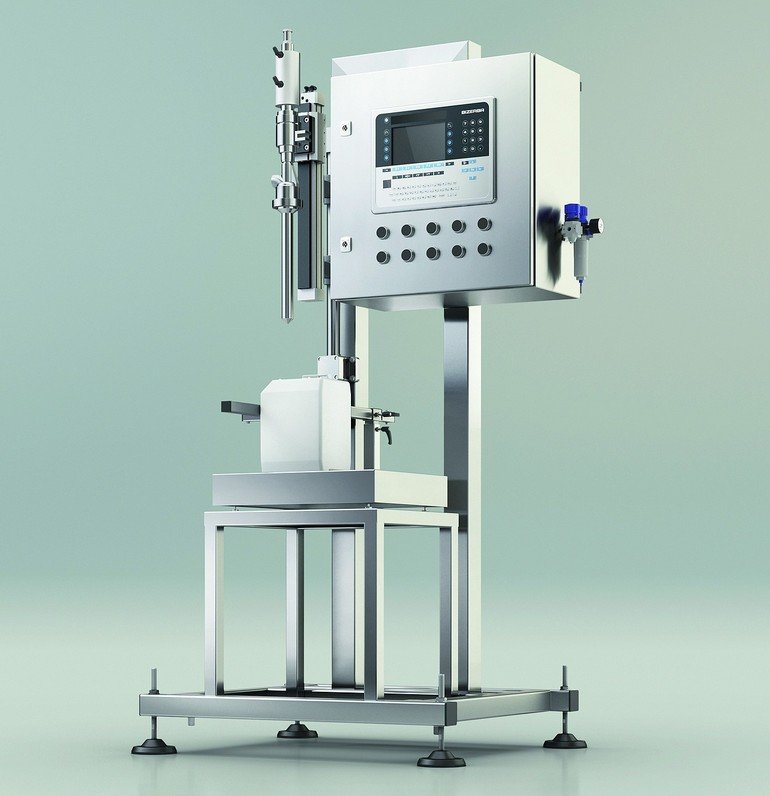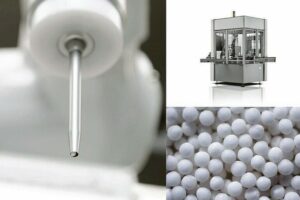Firmen im Artikel
The filling operation at the end of a production line can be performed by a semi- or fully automatic system. The only difference between them has to do with container handling. In semiautomatic systems, containers are manually fed and positioned in the filling station, while the filling process itself is done automatically. In fully automatic facilities, on the other hand, the containers are automatically conveyed from a magazine to a separation unit and the filling station before being transported onward. The product itself can be fed to the facility either gravimetrically from elevated tanks or by pumps.
Semiautomatic systems are often the most economical solution for small batches. The container is first of all placed manually on a weighing platform. A movable filling valve then allows the filling nozzle to be lowered into the container. A more sophisticated solution is required for containers that must be filled and weighed while standing on a palet. In contrast to single-container filling stations, where the containers must be positioned underneath the filling valve, the valve must instead be positioned above the container. Apart from potential time savings, this also eliminates the hard labour required for palletising heavy containers.
Safe even in hazardous areas
In sensitive areas such as the chemical or paint industry, particularly tough systems are vital because flammable, poisonous and corrosive substances are quite common in this kind of environment. All components of a filling system should be designed for highly sensitive products and hazardous areas. To offer maximum protection, the entire filling process can also take place within a protective enclosure. This highly safe approach additionally lends itself to applications with high hygiene requirements, including the pharmaceutical and food sectors.
The semiautomatic FSL-PRO S filling system ensures appropriate filling and weighing even of goods with difficult processing characteristics (e. g. flammable, corrosive or foaming substances). Amongst other things, it can be used for highly sensitive liquids in the paint and varnish, chemical, petrochemical, construction material, pharmaceutical and food industries. As a flexible all-round system, it ensures to-the-gramme filling and weighing accuracy as well as gentle dispensing in hazardous areas (Ex zones 1 and 2). It is also in conformity with Atex guidelines. Products can be filled into different containers. The use of multiple valves enables fast product and container changeovers without any risk of cross-contamination, thereby providing maximum flexibility and reducing downtime.
Online search: cpp0317bizerba
Hall 3, Booth 531









